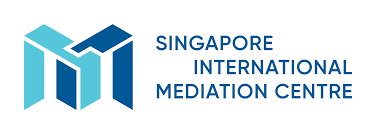Webinar Topical Summary – Singapore Convention Week: Hybrid Dispute Resolution Mechanisms as the Wave of the Future: Perspectives from Singapore as a Maritime Hub

On 9 September 2021, Singapore Chamber of Maritime Arbitration, in strategic partnership with Oon & Bazul and the Singapore International Mediation Centre, organised a webinar titled “Hybrid Dispute Resolution Mechanisms as the Wave of the Future: Perspectives from Singapore as a Maritime Hub” as part of the Singapore Convention Week 2021. The webinar was chaired by Managing Partner & Head of Dispute Resolution Bazul Ashhab. The panel of speakers comprised of Mr. Jayesh Ashar, the Managing Partner of K Ashar & Co, Mr. Chuan Wee Meng, the CEO of SIMC, Mr. Nicholas Fell, head of Corporate Services and General Counsel for BW, and a Director of North of England P&I Association Limited and Knauf Energy Solutions SA, Mr. Punit Oza the Registrar & Executive Director of SCMA, Mr. Prakaash Silvam, a partner at Oon & Bazul and Ms. Bo Yang a partner at Jingtian & Gongcheng.
Speech by Mr. Edwin Tong SC
The webinar began with a short speech by Mr. Edwin Tong SC, the Minister for Culture, Community, and Youth, and Second Minister for Law. Mr. Tong highlighted some of the benefits of hybrid dispute resolution mechanisms, such as the ability to provide specialised and technical expertise to the dispute while maintaining a fair, timely and cost-effective means in resolving a dispute. He also highlighted how arbitration is especially useful in the maritime industry where most disputes are cross-border issues. He also touched on the usefulness of hybrid dispute resolution mechanisms’ ability to combine the best of both arbitration and mediation such as the enforcement capability of arbitration and the preservation of business relationships of mediation. Mr. Tong ended his speech by summarising some of the problems facing the adoption and implementation of hybrid dispute resolution mechanisms.
Speech By Bazul
Bazul highlighted in his speech, that the force driving up the acceptance of the Singapore Convention is also the acceptance of mediation as an important sophisticated dispute resolution tool rather than as a poorer cousin of arbitration and litigation. He noted that often, Commercial Users demand that their disputes are resolved quickly and cost-efficiently and without leaving a trail of destruction through the adversarial process. It is this thinking that is behind the design of Hybrid Dispute Resolution clauses such as the SCMA-SIMC Arbitration Mediation Arbitration protocol. Bazul ended his speech by signposting that the panel would discuss the suitability of hybrid dispute resolution mechanism for maritime cases, the utilisation of experiences from practitioners from Singapore, China and India and the future of hybrid dispute resolution mechanisms for resolving maritime disputes.
Panel Discussion
1. How hybrid dispute resolution mechanisms clause work
Bazul kicked off the panel discussion by asking Prakaash to give a brief overview on how dispute resolution mechanisms work. Prakaash gave an overview of the combined arbitration and mediation process. Parties first send a notice of arbitration, and once a response is received, a tribunal is appointed. In hybrid dispute resolution mechanisms, the arbitration can be stayed to give parties an opportunity to mediate within a period of time. If the mediation is successful and the dispute is settled, it can be recorded as a consent award. However, if the mediation is not successful in fully resolving the dispute, the parties can resume the arbitration.
2. SCMA has incorporated the SCMA-SIMC arb-med-arb protocol in their recommended standard clauses
Punit explained the benefits of the SCMA-SIMC arb-med-arb protocol. It is a self-administered model providing greater party autonomy, reduces costs, and preserves business relationships.
3. The importance and emphasis on a cost-effective and less adversarial dispute resolution mechanism
Bazul highlighted that a large proportion of maritime cases are not very large in value and asked if whether this would be significant factor that would affect Commercial Users adoption of hybrid dispute resolution mechanisms. Nicholas shared that he has only seen an increasing uptake of mediation and that all the commercial users he has encountered have found mediation to be worth the time and costs. He also raised the common myth that a party suggesting mediation is a weaker party and debunked it. He recommended including an express hybrid dispute resolution clause in any commercial contracts as this may overcome the psychological hurdle that some parties have towards hybrid dispute resolution mechanisms.
In this regard, Wee Meng offered a different perspective on how some members in the maritime industry view mediation – given that the maritime industry is a small yet strong community, mediating disputes may not guarantee a friend but it allows one to have one less enemy. Mediation encourages the building of a community where disputes no longer strain relationships beyond the point of no return but instead, creates an ecosystem where members of the community can continue to do business with one another knowing that any disputes can always be discussed and resolved between each other.
4. Flexibility of mediation – evaluative or facilitative
Given the option for parties to choose between evaluative and facilitative mediation, Bazul explored the circumstances where one form may be preferable over the other. With Wee Meng’s experience in managing countless numbers of mediation, he shared his observation that evaluative mediation is likely to be more suitable for smaller value claims. Often, evaluative mediations are melded with expert determination as well. This allows parties to come to a quick resolution which is crucial when the claim value is relatively smaller.
Wee Meng also highlighted another flexible aspect of mediation, being that parties can have a choice of which issues they wish to mediate and leaving the others to be determined in arbitration or court proceedings. Parties can be creative in the way they utilise the mediation process. An example raised was splitting between the issues of liability and quantum, and opting to mediate one of the issues while leaving the other to the Tribunal or Court. Additionally, SIM has a joint protocol with JIMC, where the two institutes work together to offer different mediation processes, catering to the cultural differences. For example, having two mediators with different backgrounds and having the mediation span across three days instead of one. This gives the mediators more time to unpick the parties’ concerns and manage the cultural differences adequately.
5. The use of mediation in the jurisdictions of India and China
India
We had Jaya Ashar share with us his experience dealing with users of mediation in India. He mentioned that whenever he discussed the use of mediation with his clients, they were always concerned with when would be a good time to go for mediation. To this, Jaya’s reply was always: there is no better time than today. Parties can always begin the mediation process to start negotiations whenever they wish to and the idea of going for mediation mostly comes up after litigation or arbitration has begun.
Jaya then shared the main concerns that users in India have. He highlighted that many clients have a fear of biasness. To this, its crucial that there are ethical standards for mediators, setting out rules that mediators need to abide by. This would instil faith and trust from a user perspective. The second is the mediators’ domain expertise, being able to understand each parties’ concerns. Parties are looking out for whether mediators have a good understanding of the industry, as well as the ability to understand the issues from their respective perspectives. Third, it is the cost of mediation. Cost is a big concern and in resolving disputes, parties are looking for finality. In this regard, even though India is a signatory to the Singapore Convention on Mediation, it has yet to ratify it. He foresees that ratification would go a long way in ensuring finality of mediated settlement agreements, encouraging more users of mediation in India.
Bazul raised the topic of challenges surrounding the incorporation of hybrid clauses into government contracts. Based on Jaya’s experience in acting for governments, he highlighted that there is an element of resistance coming from them as mediations require decisions to be taken by government bodies and there is an issue of accountability when such decisions are taken. Many prefer for the Tribunal or the Courts to give a judgment on what is to be done. That said, the situation is changing in light of the efficiency of mediation. Government bodies are keener in using the hybrid process as it allows for the dispute to be resolve quickly.
China
Bo Yang shared that mediation in China is still at its early stages where parties predominantly turn to litigation or arbitration. The hybrid mechanism has yet to pick up speed in China because of the users’ unfamiliarity with the process. She raised that while users recognise the time and costs savings, they have their doubts when it comes to the likelihood of success of a mediation. The fact that a mediated settlement agreement is subject to parties’ agreement creates the impression that they might take a longer time to come to an understanding and thus, incurring more costs and time as compared to litigation or arbitration. This is especially so for the larger value cases.
That said, Bo Yang raised that mediation is often used in construction disputes, especially with regards to disputes over ship building contracts. She believes that the hybrid mechanism will soon pick up speed and be welcome in the future.
6. Enforcement of mediated settlement agreements
Prakaash brought the audience through the changes that the Singapore Convention on Mediation brought about. Prior to the Singapore Convention on Mediation, parties had to go through the steps of commencing court proceedings, suing a party for breach of contract i.e. the settlement agreement, obtain a judgment, and enforce the judgment either in Singapore or in another jurisdiction. Now, the mediated settlement agreement can be recorded as an Order of Court and it can be enforced in other jurisdictions under the reciprocal enforcement treaties that are available. With the hybrid dispute resolution process, parties can record the mediated settlement agreement as a consent award and this allows the enforcement of the award in up to 168 states under the New York Convention.
Q&A
Is co-mediation with different backgrounds suitable for maritime disputes?
Wee Meng explained that SIMC curates their mediators to ensure that co-mediators often have different backgrounds and characteristics. This is to ensure that the mediators are able to employ their full skills and range and so that all technical expertise required for the mediation is covered.
How important is it for parties to incorporate hybrid dispute resolution clauses into commercial contracts?
The panellists encouraged all parties to incorporate hybrid dispute resolution clauses into contracts and charterparties. They noted that in the Asian context, commercial parties are more likely to want to stick to the terms of the contract and therefore having an express hybrid dispute resolution clause will better facilitate any future attempts at mediation or arbitration. Wee Meng also noted that often parties find a final award by an arbitrator more palatable after attempting mediation as they understand that they have tried their best to resolve the issue. Bazul also noted that often times even if the mediation is not fully successful in resolving the dispute, it can help to narrow down a large number of issues to several key important issues, which will help to save costs and time in future arbitrations or legal proceedings.
All text and images are attributed to Oon & Bazul. We thank Oon & Bazul for the warm invite and lively discussion.

